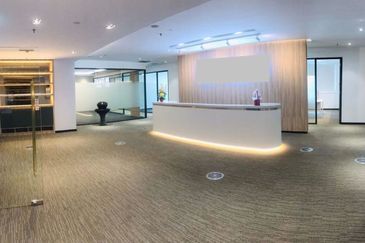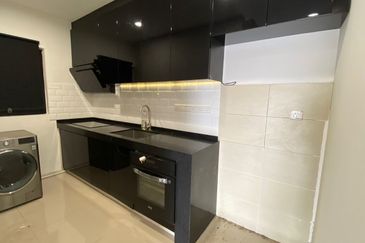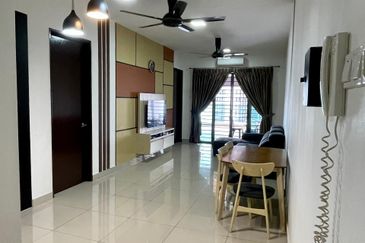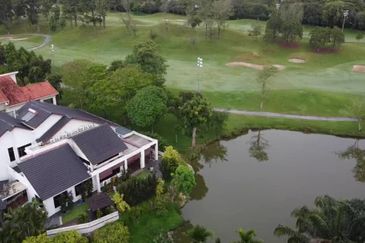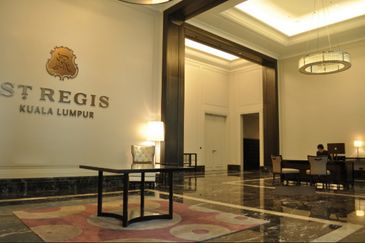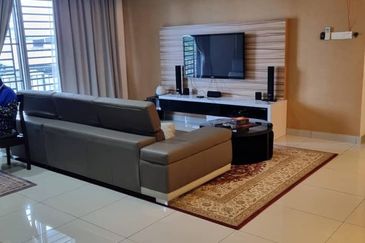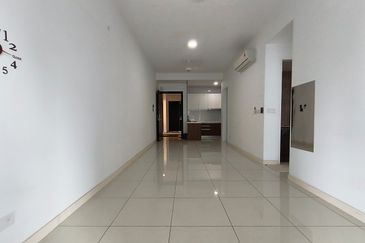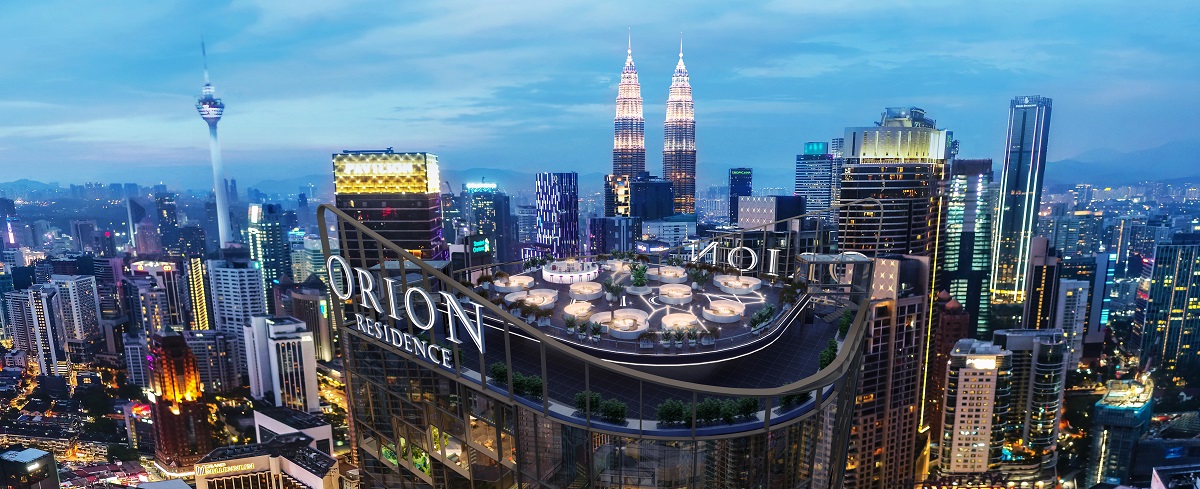KUALA LUMPUR: Resident associations may set up guarded neighbourhoods if a minimum of 51% of residents agree, said Housing and Local Government Minister Datuk Chor Chee Heung.
Speaking at a press briefing on the new guidelines for gated communities and guarded neighbourhoods on Wednesday, Sept 8, he said this was necessary as it involved monthly contributions for the upkeep of security features, which involved paying the security guards.
"If residents are not interested, you cannot force them to pay," he said, adding that residents who refused to pay their monthly payments could not be hauled to court as they are not legally, but merely morally obliged to pay for security services.
Chor said the guidelines were introduced to ensure a uniformed approach towards the setting up of gated communities and guarded schemes, which are becoming a trend in the urban areas.
According to Chor, the guidelines are applicable to all states in Peninsular Malaysia, with the exception of Sabah and Sarawak as these states have their own by-laws.
Federal Department of Town and Country Planning deputy director Dr Alias bin Rameli, who conducted the press briefing, said that while all state committees except those in Sabah and Sarawak had to approve these guidelines, they are already required to adopt these guidelines immediately.
The new guidelines outline the definition of the gated community and guarded neighbourhood schemes as follows:
Gated communities
A gated community may be defined as a group of residents living in a gated and guarded area, encompassing high-rise properties such as condominiums, apartments and townhouses or landed properties such as bungalows, terrace houses and semi-detached houses. Nonetheless, in the Malaysian context, gated communities usually understood as a group of residents or a community living in homes with strata titles.
The guidelines for gated communities are the following:
1. Gated communities are only allowed in certain locations within urban areas that have been deemed as high in crime based on police records. Gated communities are not encouraged in rural areas because of concerns that they may have adverse effects, especially on the community and cause severe social isolation.
2. Proposals for guarded communities must be determined and earmarked in development layout plans, especially for large-scale guarded communities. These proposals are subject to planning approvals from the local authorities.
3. The minimum size of a guarded community is one hectare. For larger gated communities with multiple schemes, the maximum size of each scheme is 10 hectares. This is equivalent to 200 to 500 residential units per scheme.
4. Common property, including roads under the gated community scheme, is owned by the community within the scheme. They will be responsible for the maintenance of common property via the appointment of a management corporation.
5. The building of a fence or wall that completely separates residents and non-residents of gated communities is forbidden. The construction of a fence or wall that serves as a boundary between the gated community and the adjacent area is allowed. It cannot be higher than 2.75m.
6. A social impact evaluation under subsection 21A(1A) of the Urban and Rural Planning Act 172 has to be prepared before the development of a gated community is approved by local authorities.
7. In terms of the system and hierarchy of roads, a direct road between a gated community scheme and another residential area must be built and the entry to second layer lots must be unobstructed. At least two entrances and exits must also be prepared in case of emergencies.
8. Building design and layout must also emphasise safety and have an interesting aesthetic while following current housing guidelines and reccomendations by local housing authorities. Buildings may not be higher than 8.5m.
9. Landscaping must be appropriate and always maintained. The height of shrubs cannot be higher than the fences or walls and its foliage must not be too dense.
10.Guardhouses must be built inside the gated community area and must not block traffic. They must be no larger than 1.8m x 2.4m.
11. A special path for access to utilities such as electiricity, telephone lines, water supply, gas and sewage system with a width of at least 2.5m must be prepared in a gated community to imrpove service and ease servicing.
12. Parking space for residents and visitors must be adequate. Each home must have parking space in line with development approvals and building plans.
13. Only club houses, playgrounds, recreational areas and pools are allowed in gated communities. Recreational areas within these communities are not part of the 10% of public space usually allocated in the entire development scheme, and
14. Gated communities must have local names with the characteristics of Malaysian culture.
Guarded neighbourhood:
Guarded neighbourhoods may be defined as a completely or partially guarded residential area within existing or new housing schemes where the land is held under individual land titles. These neighbourhoods exist on an ad-hoc basis based on an agreement by residents of a neighbourhood to turn their area into guarded neighbourhoods.
The guidelines for guarded neighbourhood are as follows:
1. Guarded neighbourhoods are only allowed in certain locations within urban areas that have been deemed as high in crime based on police records. They may not be set up if there are major public amenties within the neighbourhood such as mosques, schools and so forth and if the area is part of a public bus route.
2. The local authorities may determine the minimum or maximum number of residnetial units in a guarded neighbourhood to ensure that is guarded and managed effectively.
3. A proposal for a guarded neighbourhood must be submitted to the relevant local authorities through a residents association that is registered with the Registrar of Societies.
4. The proposal must receive approval by the majority of residents.
5. Guardhouses must be built on the road shoulder and must not block traffic. They must be no larger than 1.8m x 2.4m. If the guardhouses are a permanent structure, the residents association must apply for a temporary occupation license from the district land office.
6. The proposed location of the guardhouse must be marked in a suitable plan and submitted to the local authorities. Guardhouses may only be built with the approval of the local authorities.
7. The proposed design of the guardhouse must be submitted in the form of a plan to the local authorities. The roof and facade design must be in harmony with its neighbouring buildings, be built properly and not detract from its environment.
8. Temporary blockades such as manual boom gates, cones and safety signs may be considered in appropriate locations at the entrance in front of the guardhouse provided that there are security personel stationed at the blocaked round-the-clock.
9. Perimeter fencing is not allowed.
10. Appointed security personel must be registered with the Home Ministry.
11. Should residents decide to return their neighbourhood back to a regular neighbourhood, the residents association must inform the local authorities.
Speaking at a press briefing on the new guidelines for gated communities and guarded neighbourhoods on Wednesday, Sept 8, he said this was necessary as it involved monthly contributions for the upkeep of security features, which involved paying the security guards.
"If residents are not interested, you cannot force them to pay," he said, adding that residents who refused to pay their monthly payments could not be hauled to court as they are not legally, but merely morally obliged to pay for security services.
Chor said the guidelines were introduced to ensure a uniformed approach towards the setting up of gated communities and guarded schemes, which are becoming a trend in the urban areas.
According to Chor, the guidelines are applicable to all states in Peninsular Malaysia, with the exception of Sabah and Sarawak as these states have their own by-laws.
Federal Department of Town and Country Planning deputy director Dr Alias bin Rameli, who conducted the press briefing, said that while all state committees except those in Sabah and Sarawak had to approve these guidelines, they are already required to adopt these guidelines immediately.
The new guidelines outline the definition of the gated community and guarded neighbourhood schemes as follows:
Gated communities
A gated community may be defined as a group of residents living in a gated and guarded area, encompassing high-rise properties such as condominiums, apartments and townhouses or landed properties such as bungalows, terrace houses and semi-detached houses. Nonetheless, in the Malaysian context, gated communities usually understood as a group of residents or a community living in homes with strata titles.
The guidelines for gated communities are the following:
1. Gated communities are only allowed in certain locations within urban areas that have been deemed as high in crime based on police records. Gated communities are not encouraged in rural areas because of concerns that they may have adverse effects, especially on the community and cause severe social isolation.
2. Proposals for guarded communities must be determined and earmarked in development layout plans, especially for large-scale guarded communities. These proposals are subject to planning approvals from the local authorities.
3. The minimum size of a guarded community is one hectare. For larger gated communities with multiple schemes, the maximum size of each scheme is 10 hectares. This is equivalent to 200 to 500 residential units per scheme.
4. Common property, including roads under the gated community scheme, is owned by the community within the scheme. They will be responsible for the maintenance of common property via the appointment of a management corporation.
5. The building of a fence or wall that completely separates residents and non-residents of gated communities is forbidden. The construction of a fence or wall that serves as a boundary between the gated community and the adjacent area is allowed. It cannot be higher than 2.75m.
6. A social impact evaluation under subsection 21A(1A) of the Urban and Rural Planning Act 172 has to be prepared before the development of a gated community is approved by local authorities.
7. In terms of the system and hierarchy of roads, a direct road between a gated community scheme and another residential area must be built and the entry to second layer lots must be unobstructed. At least two entrances and exits must also be prepared in case of emergencies.
8. Building design and layout must also emphasise safety and have an interesting aesthetic while following current housing guidelines and reccomendations by local housing authorities. Buildings may not be higher than 8.5m.
9. Landscaping must be appropriate and always maintained. The height of shrubs cannot be higher than the fences or walls and its foliage must not be too dense.
10.Guardhouses must be built inside the gated community area and must not block traffic. They must be no larger than 1.8m x 2.4m.
11. A special path for access to utilities such as electiricity, telephone lines, water supply, gas and sewage system with a width of at least 2.5m must be prepared in a gated community to imrpove service and ease servicing.
12. Parking space for residents and visitors must be adequate. Each home must have parking space in line with development approvals and building plans.
13. Only club houses, playgrounds, recreational areas and pools are allowed in gated communities. Recreational areas within these communities are not part of the 10% of public space usually allocated in the entire development scheme, and
14. Gated communities must have local names with the characteristics of Malaysian culture.
Guarded neighbourhood:
Guarded neighbourhoods may be defined as a completely or partially guarded residential area within existing or new housing schemes where the land is held under individual land titles. These neighbourhoods exist on an ad-hoc basis based on an agreement by residents of a neighbourhood to turn their area into guarded neighbourhoods.
The guidelines for guarded neighbourhood are as follows:
1. Guarded neighbourhoods are only allowed in certain locations within urban areas that have been deemed as high in crime based on police records. They may not be set up if there are major public amenties within the neighbourhood such as mosques, schools and so forth and if the area is part of a public bus route.
2. The local authorities may determine the minimum or maximum number of residnetial units in a guarded neighbourhood to ensure that is guarded and managed effectively.
3. A proposal for a guarded neighbourhood must be submitted to the relevant local authorities through a residents association that is registered with the Registrar of Societies.
4. The proposal must receive approval by the majority of residents.
5. Guardhouses must be built on the road shoulder and must not block traffic. They must be no larger than 1.8m x 2.4m. If the guardhouses are a permanent structure, the residents association must apply for a temporary occupation license from the district land office.
6. The proposed location of the guardhouse must be marked in a suitable plan and submitted to the local authorities. Guardhouses may only be built with the approval of the local authorities.
7. The proposed design of the guardhouse must be submitted in the form of a plan to the local authorities. The roof and facade design must be in harmony with its neighbouring buildings, be built properly and not detract from its environment.
8. Temporary blockades such as manual boom gates, cones and safety signs may be considered in appropriate locations at the entrance in front of the guardhouse provided that there are security personel stationed at the blocaked round-the-clock.
9. Perimeter fencing is not allowed.
10. Appointed security personel must be registered with the Home Ministry.
11. Should residents decide to return their neighbourhood back to a regular neighbourhood, the residents association must inform the local authorities.
SHARE
TOP PICKS BY EDGEPROP
RENT
FEATURED
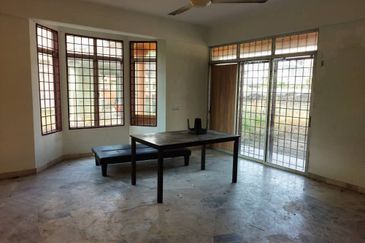
Taman Tasik Semenyih (Lake Residence)
Semenyih, Selangor
RM 1,800
4 beds |
3 bath |
sqft
RENT
FEATURED
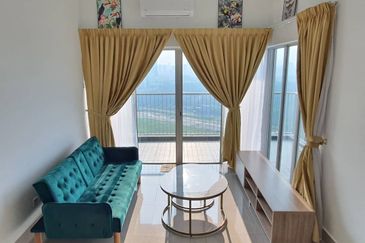
Razak City Residences
Salak Selatan, Kuala Lumpur
RM 3,000
3 beds |
3 bath |
1140 sqft
SALE
FEATURED

Taman Tasik Semenyih (Lake Residence)
Semenyih, Selangor
RM 550,000
4 beds |
3 bath |
2500 sqft
SALE
FEATURED

Suadamai, Bandar Tun Hussein Onn
Cheras, Selangor
RM 985,000
5 beds |
5 bath |
2386 sqft
SALE
FEATURED

Suadamai, Bandar Tun Hussein Onn
Cheras, Selangor
RM 1,050,000
5 beds |
4 bath |
2500 sqft
SALE
FEATURED
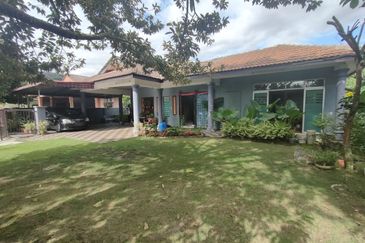
Taman Tasik Semenyih (Lake Residence)
Semenyih, Selangor
RM 600,000
4 beds |
3 bath |
sqft
SALE
FEATURED

Bangunan Duta Impian (The Embassy Suites)
Johor Bahru, Johor
RM 550,000
3 beds |
3 bath |
1180 sqft

